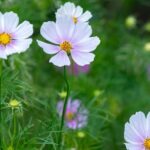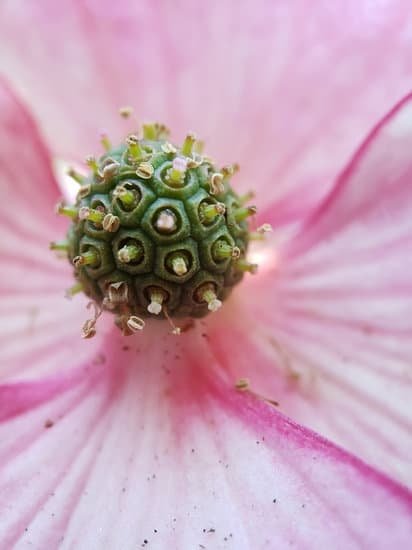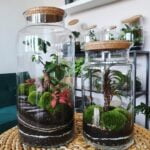Are you looking for fresh new herb gardening ideas to spice up your garden? Herb gardening is not only a great way to add flavor to your meals but also to enhance the visual appeal of your outdoor space.
In this article, we will explore a variety of innovative and practical herb gardening ideas to help you get started with your own herbal oasis. Whether you are an experienced gardener or just starting out, there is something for everyone in this comprehensive guide.
Herb gardening has been practiced for centuries, and it continues to be a popular pastime for many people today. Growing herbs can be a rewarding and enjoyable experience, whether you have a large backyard or just a small balcony.
From selecting the right herbs for your garden to creative container gardening ideas and tips for growing herbs indoors, there are countless ways to incorporate these versatile plants into your outdoor living space. Discover how companion planting with herbs can benefit other plants in your garden and get inspired to create your own herbal tea garden.
In addition to adding flavor to your dishes and drinks, herbs can also be used for natural pest control and medicinal purposes. Furthermore, learning how to harvest and preserve herbs ensures that you have access to fresh flavors year-round. Join us as we delve into the world of herb gardening and explore the endless possibilities for incorporating these aromatic plants into your outdoor oasis.
Selecting the Right Herbs for Your Garden
When it comes to herb gardening ideas, selecting the right herbs for your garden is crucial for a successful and bountiful harvest. Whether you are a beginner or an experienced gardener, choosing the right herbs will ensure that you have a diverse range of flavors and aromas to enhance your culinary creations, teas, or even medicinal remedies.
Consider Your Climate and Soil Conditions
Before you start planting your herb garden, it’s important to consider the climate and soil conditions in your area. Some herbs thrive in full sun, while others prefer partial shade. Additionally, certain herbs require well-drained soil, while others can tolerate more moisture. Researching the specific needs of each herb will help you determine which ones are best suited for your garden.
Herbs for Culinary and Medicinal Uses
When selecting herbs for your garden, consider both culinary and medicinal uses. For culinary purposes, popular choices include basil, parsley, thyme, rosemary, mint, and oregano. These herbs can be used fresh or dried to add flavor to a wide variety of dishes. On the other hand, if you are interested in creating a medicinal herb garden, you may want to include herbs like lavender, chamomile, echinacea, and lemon balm for their healing properties.
Annuals vs. Perennials
Another factor to consider when choosing herbs for your garden is whether they are annuals or perennials. Annual herbs like basil and cilantro complete their life cycle within one growing season and need to be replanted each year. Perennial herbs such as oregano and thyme come back year after year without needing to be replanted. Understanding the lifespan of each herb will help you plan and maintain your garden more effectively.
By carefully selecting the right herbs for your garden based on climate conditions, intended use (culinary or medicinal), and lifespan (annual or perennial), you can create a thriving herb garden that will provide an abundance of fresh flavors and aromas all year round.
Tips for Growing Herbs Indoors
When it comes to herb gardening, having a thriving indoor herb garden is a great way to enjoy fresh herbs year-round. Whether you are limited on outdoor space or simply want easy access to your favorite herbs in the kitchen, growing herbs indoors can be a rewarding experience. Here are some tips for successfully growing herbs indoors:
Tips for Growing Herbs Indoors
- Choose the right location: Select a sunny spot in your home with at least 6-8 hours of sunlight per day. South-facing windows tend to provide the best light for indoor herb gardens.
- Select the right containers: Use well-draining containers with plenty of drainage holes to prevent waterlogged soil, which can lead to root rot. Terra cotta pots and fabric grow bags are great options for growing herbs indoors.
- Use quality potting mix: Opt for a high-quality potting mix specifically designed for container gardening. Good soil drainage is crucial for healthy herb growth.
In addition to these tips, consider experimenting with different types of indoor herb gardens, such as vertical gardens or hanging herb planters, to maximize space and enhance the aesthetic appeal of your indoor herb garden. With these tips in mind, you can enjoy the convenience and satisfaction of having fresh herbs at your fingertips no matter the season.
Overall, there are numerous creative approaches to establishing a successful indoor herb garden regardless of space constraints or limitations on outdoor access. By employing these helpful suggestions, you can cultivate an abundance of flavorful and aromatic herbs right in your own home while also adding a beautiful touch of greenery to your living space.
Whether you opt for traditional terracotta pots or stylish hanging planters, there’s no shortage of ways to incorporate an indoor herb garden into your home decor while enjoying all the benefits of fresh herbs at any time.
Creative Container Herb Gardening Ideas
When it comes to herb gardening ideas, container gardening provides a versatile and space-saving option for growing herbs. Not only does it allow you to grow herbs in smaller spaces, but it also provides the flexibility of moving your plants to different locations based on sunlight and weather conditions. There is a wide range of creative and innovative ways to incorporate container herb gardening into your outdoor or indoor spaces.
One popular idea is to repurpose items such as old tea cups, mason jars, or tin cans as unique planters for your herbs. This not only adds a charming and eclectic touch to your herb garden but also promotes sustainability by reusing household items. Additionally, hanging baskets can be utilized for vertical gardening, making efficient use of space and adding an eye-catching element to your garden.
Another creative idea for container herb gardening is designing a themed herb garden, such as a cocktail herb garden featuring herbs commonly used in mixed drinks, or a pizza herb garden with herbs like basil, oregano, and thyme. This not only adds an element of fun and cohesion to your garden but also serves the practical purpose of having fresh herbs readily available for specific culinary uses.
Moreover, incorporating various sizes and shapes of containers can add visual interest and depth to your herb garden. For example, mixing tall planters with cascading varieties creates an engaging display while utilizing different levels within the container arrangement. Experimenting with textures and colors of containers can also contribute to the aesthetic appeal of your container herb garden.
| Herb Gardening Idea | Description |
|---|---|
| Repurposed planters | Using old items like tea cups or mason jars as planters |
| Themed herb gardens | Designing gardens around specific themes like cocktails or pizzas |
| Container variety | Mixing different sizes and shapes for an interesting display |
Companion Planting With Herbs
Understanding Companion Planting
Companion planting involves growing different plants in close proximity to one another for mutual benefit. When it comes to herb gardening, companion planting with other herbs or vegetables can help improve the overall health and yield of your garden. This practice is based on the principle that certain plants can complement each other by deterring pests, attracting beneficial insects, and improving soil quality.
One of the key benefits of companion planting with herbs is their ability to repel pests that may damage neighboring plants. For example, planting basil alongside tomatoes can help deter tomato hornworms and aphids, while also enhancing the flavor of the tomatoes. Similarly, growing chives near carrots can help keep carrot rust flies at bay. Understanding which herbs work well together and which ones should be kept apart is essential for successful companion planting in your herb garden.
Popular Companion Plants for Herbs
When selecting companion plants for your herb garden, consider pairing herbs with vegetables or other herbs that share similar growing conditions and benefit from each other’s presence. Some popular companion plants for herbs include marigolds, which can help repel nematodes and attract beneficial insects like ladybugs; dill, which can attract predatory insects to control pest populations; and thyme, which can improve the growth and flavor of neighboring plants like strawberries.
In addition to pest control and soil improvement, certain combinations of herbs and companion plants can also enhance the flavors of culinary herbs and vegetables. For instance, growing mint near broccoli or cabbage may help reduce the pungent odor often associated with those vegetables. Similarly, planting chamomile near onions or cucumbers can enhance their growth while adding a delicate floral aroma to their flavors.
By incorporating companion planting with herbs into your gardening strategy, you can create a more vibrant and resilient herb garden while promoting biodiversity and natural ecological balance within your outdoor space.
Herbal Tea Garden Inspiration
Creating your own herbal tea garden is a delightful and rewarding experience that allows you to enjoy the beauty and aromas of fresh herbs while providing a sustainable source of ingredients for tasty and healthful teas. There are countless herb gardening ideas to consider when planning your herbal tea garden, from choosing the right herbs to designing a space that meets your needs.
When selecting herbs for your herbal tea garden, consider popular options like mint, chamomile, lavender, lemon balm, and lemongrass. These herbs not only provide a variety of flavors and aromas but also offer several health benefits. For example, mint can aid in digestion and relieve nausea, while chamomile is known for its calming properties. It’s important to research each herb’s growing requirements and determine which ones are best suited for your climate and soil conditions.
Designing an herbal tea garden can be a fun and creative process. Many people choose to arrange their herbs in raised beds or containers to keep them organized and easily accessible for harvesting. Incorporating pathways, seating areas, or decorative elements can enhance the visual appeal of your garden while providing a tranquil space for relaxation. Additionally, adding fragrant flowers or ornamental plants can attract beneficial insects and pollinators to help maintain a healthy ecosystem in your garden.
| Herbs | Health Benefits |
|---|---|
| Mint | Aids in digestion and relieves nausea |
| Chamomile | Known for its calming properties |
| Lavender | Promotes relaxation and reduces anxiety |
Culinary Herb Garden Design Ideas
When designing a culinary herb garden, there are several factors to consider such as space, sunlight, and the types of herbs you want to grow. Here are some ideas to help you create a beautiful and functional culinary herb garden:
1. Vertical Herb Garden: If you have limited space, consider creating a vertical herb garden using wall-mounted planters or hanging pots. This not only maximizes space but also adds a decorative touch to your garden.
2. Spiral Herb Garden: A spiral herb garden is not only visually stunning but also practical for growing a variety of herbs in a small area. The spiral design allows for different levels of sunlight exposure, making it ideal for herbs with varying light requirements.
3. Raised Bed Herb Garden: Constructing raised beds for your culinary herb garden not only provides good drainage but also makes it easier to maintain and harvest your herbs. You can customize the size and shape of the raised beds to fit your available space.
4. Theme-based Herb Garden: Consider designing your culinary herb garden around a specific theme, such as Italian or Mediterranean herbs. Grouping herbs that are commonly used together in certain cuisines not only looks cohesive but also makes it convenient when cooking with these herbs.
5. Companion Planting: When designing your culinary herb garden, take into account companion planting principles by pairing herbs that benefit each other when grown together. For example, planting basil near tomatoes can enhance the flavor of the tomatoes while deterring pests.
By incorporating these design ideas into your culinary herb garden, you can create a beautiful and productive space for growing fresh ingredients to elevate your cooking.
Using Herbs for Natural Pest Control in Your Garden
As a natural and eco-friendly alternative to chemical pesticides, many gardeners are turning to herb gardening ideas for natural pest control. By strategically planting certain herbs, you can help repel unwanted pests from your garden while also enjoying the beauty and fragrance of these beneficial plants.
One popular herb known for its pest-repelling properties is basil. This aromatic herb not only adds flavor to your dishes, but it can also help keep mosquitoes and flies at bay. Planting basil near doorways or outdoor seating areas can deter these annoying pests, making it a practical and decorative addition to your garden.
Another herb that can be used for natural pest control is mint. While it may seem invasive due to its aggressive growth habit, mint is effective at warding off ants, mice, and even deer. To prevent mint from taking over your garden, consider growing it in containers or designated areas with barriers to contain its spreading roots.
In addition to basil and mint, other pest-repelling herbs include lavender (scented sachets or sprays made from dried lavender can deter insects like moths), chives (can help keep aphids away from roses when planted nearby), and dill (attracts beneficial insects that prey on harmful garden pests). Incorporating these herbs into your garden not only enhances its beauty but also contributes to an environmentally-friendly approach to pest management.
Creating a Medicinal Herb Garden
When it comes to creating a medicinal herb garden, the possibilities are endless. Medicinal herbs have been used for centuries as natural remedies for various ailments and health issues. This section will provide you with some tips and ideas for creating your own medicinal herb garden.
One of the first things to consider when planning a medicinal herb garden is the selection of herbs that have medicinal properties. Some popular choices for a medicinal herb garden include lavender, echinacea, chamomile, and peppermint. These herbs can be used to make teas, tinctures, salves, and other natural remedies.
When designing your medicinal herb garden, it’s important to consider the specific growing requirements of each herb. Some medicinal herbs thrive in full sun, while others prefer partial shade. It’s also important to consider the soil quality and drainage in your garden area to ensure that your medicinal herbs have the best chance of thriving.
In addition to their health benefits, many medicinal herbs also add beauty and fragrance to your garden. Consider incorporating these plants into existing flower beds or creating a separate section dedicated solely to your medicinal herb garden. Whether you’re looking to create natural remedies at home or simply enjoy the beauty of these beneficial plants, a medicinal herb garden is a great addition to any backyard oasis.
Harvesting and Preserving Herbs for Year-Round Use
In conclusion, herb gardening offers a wide range of benefits and rewards for both beginner and experienced gardeners. With the right selection of herbs and proper care, you can enjoy fresh flavors, natural remedies, and aromatic fragrances year-round. Whether you choose to grow your herbs indoors or in creative containers, there are plenty of options to suit your space and preferences.
After selecting the right herbs for your garden and learning tips for growing them indoors, you may want to explore creative container herb gardening ideas. This approach not only adds visual interest to your garden but also allows for flexibility in placement and maintenance. Companion planting with herbs can also enhance the health and yield of other plants in your garden while herbal tea gardens provide a soothing retreat for relaxation.
Utilizing herbs for natural pest control in your garden is an eco-friendly alternative to chemical treatments, while creating a medicinal herb garden can provide a sustainable source of natural remedies. Finally, harvesting and preserving herbs for year-round use ensures that you can continue enjoying their benefits even during the winter months.
By incorporating these herb gardening ideas into your gardening practice, you can create a diverse and thriving herb garden that enhances both your culinary creations and overall well-being.
Frequently Asked Questions
What Is the Best Layout for an Herb Garden?
The best layout for an herb garden largely depends on the available space and personal preference. However, most herb gardens benefit from being arranged in a geometric pattern or divided into sections based on the herbs’ needs.
What Herbs Should and Should Not Be Planted Together?
Some herbs, like mint and oregano, are aggressive growers and can easily take over a garden if not contained. These should be planted separately or in pots to prevent them from crowding out other herbs. On the other hand, herbs like basil and cilantro complement each other and can be planted together.
What 3 Herbs Grow Well Together?
Three herbs that grow well together are basil, parsley, and chives. These herbs have similar sunlight and watering needs, making it easier to care for them when grown in close proximity to one another. Additionally, they also complement each other well in culinary dishes.

Welcome to my gardening blog! I am passionate about plants and enjoy sharing my knowledge and experiences with others. In this blog, I will write about everything related to gardening, from tips on how to get started to updates on my own garden projects.





